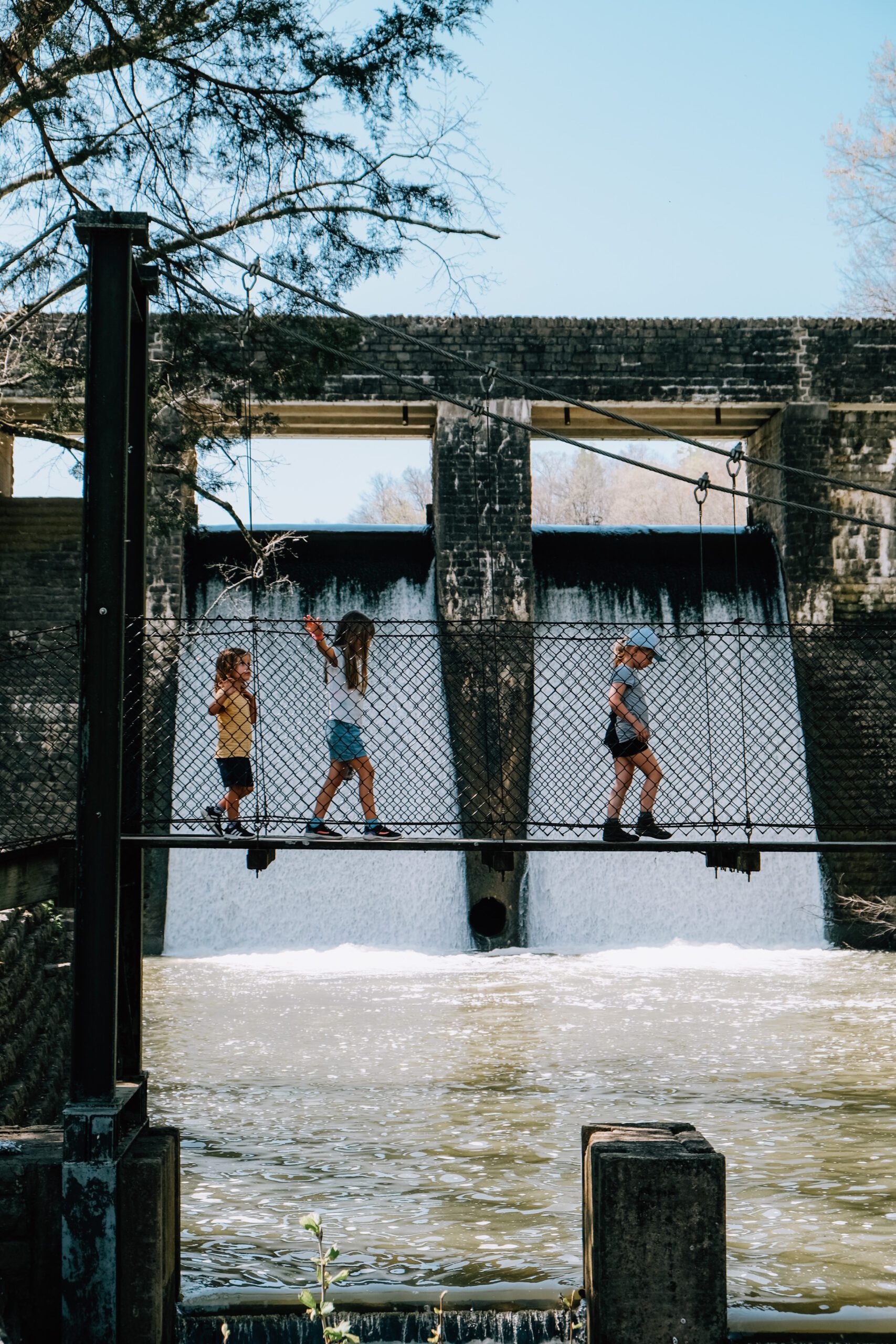It’s been too long since we’ve explored a new state park. We only have a handful left within the bubble of an easy day-trip distance, and summer break finally afforded us the time to reach one that we’d missed when we were previously in the area.
Johnsonville State Historic Park is about an hour and a half west of Nashville and sits on the opposite shore of Kentucky Lake to Nathan Bedford Forrest State Park. (To read about our visit to that park, click here.) It’s not a large park with overnight accommodations but has a great spot on the lake and is perfect for a day trip. To really discover the story of Johnsonville, though, you’ve got to do a little digging under the surface. As one of the system’s “historic parks,” its origin lies in preservation of a historic area; the site commemorates the Civil War’s Battle of Johnsonville as well as the depot and township of the same name.
The depot came first, named after the eventual-President Andrew Johnson who, at the time, was the military governor of Tennessee. The Union army built a fortified supply depot from what had once been a prosperous ferry landing on the Tennessee River. It allowed movement of goods from the Tennessee River onto railways that connected to Union-controlled Nashville and onward to Sherman’s army in Georgia. In late 1864, the depot was attacked by Confederate forces led by General Nathan Bedford Forrest, and the Union army burned their supply vessels to prevent capture by the Confederates. It was a financial blow and embarrassment to the Union but ultimately did little to shift the tides of the war.




The town came after the battlefields had cleared. Following the war, Johnsonville grew as a river-rail transport hub and was home to a post office, hotels, stores, a church, (segregated) elementary schools, and a handful of commercial factories. Because of its location on the river, the town was prone to frequent flooding, leading to the TVA’s acquisition of the land. With the construction of Kentucky Dam in 1944, the old town of Johnsonville fell to the rising waters of Kentucky Lake. Much of the town—families and actual commercial buildings—picked up and relocated down the road to form New Johnsonville, but the structural foundations of the original town (and most of the battle sites) remain buried under water.
We planned our visit around a scheduled ranger-led activity but took our time beforehand exploring
the park’s historical sites. There are two sections of the park; the Visitor Center sits on Highway 70 in New Johnsonville, but the bulk of the park lies just over a mile north along Nell Beard Road. We entered here first by hopping off Highway 70 at the town of Denver and following Old Johnsonville Road to the park’s property in what was once the heart of the old town.
The waterfront today is quiet, undeveloped. A single, small motorboat of two fishermen was the only other sign of life we encountered at this piece of land that once could be described as “busy, noisy, sprawling.” Narrow peninsulas of land stretch into the water, but you’d need a park map to know these once held Ida Street, Cherry Street, and Reynoldsburg Road. A tiny island stands out in the distance that was once the west bank of the river; a fragment of trestle from the Nashville Chattanooga & St. Louis Railroad line is still standing.




There are four short hiking trails that span the park, weaving through its sites of historical significance. Crockett Cemetery lies on what was once a military redoubt and remains a home to the families of Old Johnsonville; reproduction soldier huts sit at the base of a hill that has more recently (2015) been identified as the African Methodist Cemetery. Historical discovery is ongoing at Johnsonville; other new pieces to its story include the location of the African Methodist Church nearby its cemetery and a Freedman’s Bureau school that once sat on park land.
After touring the grounds, we headed down to the Visitor Center for our family-friendly activity—a session making Civil War-era handkerchief dolls, led by seasonal ranger Robert. In their time, these dolls were the perfect toy to tag along with children in church because they were silent if dropped; sometimes they were even stuffed with sugar cubes to keep the little ones happy and quiet. Being in the Visitor Center also gave us time to explore the Interpretive Center, which is full of photos and artifacts that illustrate Johnsonville’s history through the eras.
While most visitors come to Johnsonville for the Civil War history, the park is branching out in the stories it tells. The last decade has seen a focus on the histories of Native and African Americans; an annual Living History event the first weekend in November hosts over 20 booths that represent different aspects and professions of historical life. If you’re going to visit Johnsonville, make sure to take advantage of one of the music performances, walking tours, canoe paddles, or other events that bring life to this venerated space.
Source: The Tennessee Magazine | “Gone But Not Forgotten”
CHECKLIST
Date: July 2023
Count: 26 of 57
Region: Middle
Must-See: Visit the Interpretive Center for a contextual understanding of the park’s history

Click here to read more of our adventures in Tennessee State Parks!


